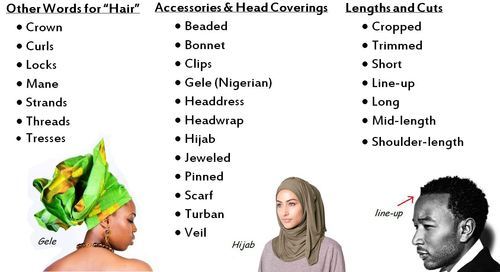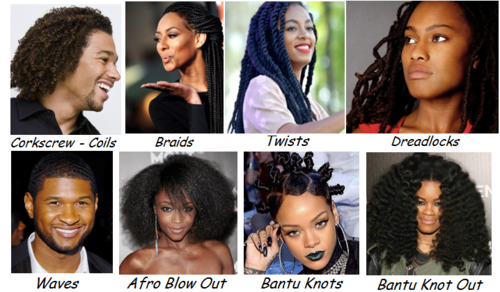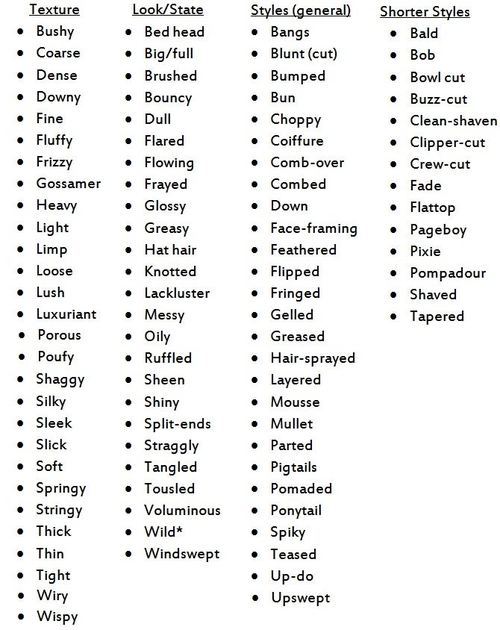Curate, connect, and discover
Writing Help - Blog Posts
Random mansion generator


The Procgen Mansion Generator produces large three-dee dwellings to toy with your imagination, offering various architectural styles and other options. Each mansion even comes with floorplans:
https://boingboing.net/2019/07/12/random-mansion-generator.html
Some words to use when writing things:
winking
clenching
pulsing
fluttering
contracting
twitching
sucking
quivering
pulsating
throbbing
beating
thumping
thudding
pounding
humming
palpitate
vibrate
grinding
crushing
hammering
lashing
knocking
driving
thrusting
pushing
force
injecting
filling
dilate
stretching
lingering
expanding
bouncing
reaming
elongate
enlarge
unfolding
yielding
sternly
firmly
tightly
harshly
thoroughly
consistently
precision
accuracy
carefully
demanding
strictly
restriction
meticulously
scrupulously
rigorously
rim
edge
lip
circle
band
encircling
enclosing
surrounding
piercing
curl
lock
twist
coil
spiral
whorl
dip
wet
soak
madly
wildly
noisily
rowdily
rambunctiously
decadent
degenerate
immoral
indulgent
accept
take
invite
nook
indentation
niche
depression
indent
depress
delay
tossing
writhing
flailing
squirming
rolling
wriggling
wiggling
thrashing
struggling
grappling
striving
straining
Words to Describe Hair
This began as a guide to describing Afro/curly hair but of course, I got carried away. From look and texture of hair, colors and various styles, this guide serves as a thesaurus of sorts for hair, as well as pointers for use in your writing.

Culturally Significant Hair Coverings:
Know the meaning behind head wear and why it’s worn, when and by whom, such as a Native Nation’s headdress, before bestowing a character with it.
Head Coverings Resources:
More on various head coverings.
See here for more Islamic Veils.
See here for more on the Nigerian gele.
See here on African American Headwraps.
View our hijab and headscarves tags for discussion on these topics.
Afro - Curly - Straightened


There are many varieties of braids, twists & Afro hair styles; have some more!
African/Black Hair: Natural, Braids and Locks
African Hair: Braiding Styles 10 African Types
Describing Black (Afro) hair:
Appropriative Hairstyles: Keep in mind that Afro styles should be kept to those in the African Diaspora, such as dreadlocks, cornrows + certain and many braided styles.
Tread carefully describing Afro hair as “wild” “unkempt” “untamed” or any words implying it’s unclean or requires controlling.
“Nappy” and “wooly” are generally words to stay away from, the first having heavy negative connotations for many and the latter, though used in the Holy Bible, is generally not acceptable anymore and comes off as dehumanizing due to Animal connotations.
There are mixed feelings on calling Black hair “kinky.” I’m personally not opposed to the word in itself and usage depends on the person’s race (I’m more comfortable with a Black person using it vs. a Non-Black person) as well as their tone and context (if it’s used in a neutral or positive tone vs. negatively/with disdain). Get feedback on your usage, or simply forgo it.
See our tags “Black Hair” and “Natural Hair” for more discussion on describing Black hair.
Texture - Look - Styles


Hair Colors and Style


Writing Tips & Things to Keep in Mind:
Combination Words: Try combing words to illustrate look of hair. A character with springy coils that dance across her shoulders with every movement, the man with thick silvery hair slicked back into a ponytail…
Mind Perspective: Depending on POV, a character might not know exactly what cornrows or a coiffure style is, at least in name, and it might make more sense if they described the hairdo instead. More defining terms might come from a more knowing source or the wearer themselves. One book I read described a girl’s afro puff as “thick hair pulled up into a cute, curly, poufy thing on top of her head and tied with a yellow ribbon.”
POC & Hair Colors: People of Color’s hair comes in all shades and textures. There are Black people with naturally blond and loosely-textured to straight hair, East Asian people with red hair, and so on. Keep that in mind when coding characters if you tend to rely on hair color alone to denote a character is white vs. a Person of Color.
Related Tropes: There are tropes and discussion related to People of Color, colored hair, and light-colored hair and features.
Check out these posts on the topic: The East Asian Women + Colored Hair Trope - Black Characters & “Wild” Hair Colors - POC w/ Supernatural Colorful Features. - ‘Uncommon’ Features & POC Characters
~Mod Colette
I don't know if you've done this before but what are some good ways to describe speech?
Ways to Describe Speech
-> feel free to edit and adjust pronouns as you see fit.
His voice was deep like the rumbling of the earth.
She had the voice of a singer, smooth and rich like chocolate.
Their voice reminded him of spring rain.
He often paused in his speaking, like a car radio that had lost signal.
She had a lilt to her voice that made it seem like she was asking a question.
Their voice was monotonous, threatening to put her to sleep with every word.
He couldn't put her voice into words. It was... otherworldly.
Her voice was brittle, as if she were on the verge of tears.
Their voice was authoritative. Their words carried like a loud command.
His voice, unapologetic and unwavering, made her shrink back.
Her voice was barely above a whisper.
Their words were cold with anger.
Other Words to Use to Describe Voice:
Firm
Formal
Frank
Hesitant
Humorous
Passionate
Playful
Professional
Respectful
Serious
Sympathetic
Smug
Superior
Croaky
Dry
Forceful
Grating
Hateful
Insincere
Nasally
Snarky
Tuneless
Wavering
Breaking
Coarse
Flat
Hoarse
High Pitched
Husky
Mellow
Raspy
Rough
Scratchy
Strong
Trembling
Boisterous
Booming
Screeching
Faint
Feeble
Frail
Penetrating
Piercing
Quiet
Raised
Shrill
Soft
Weak
Whisper
Captivating
Deep
Feathery
Hypnotic
Lilting
Mesmerizing
Rich
Smoky
Soothing
Breathy
Delicate
Warbling
NEED TWO BOY NAMES FOR A WIP
two names for twins. Genre is fantasy. Starting with the same letter is better (lol that rhymed). Preferably, one is dark themed and other is light themed but anything will do.
Thanks 😁❤️
Saving for future reference.
Showing 'Excitement' in Writing
Eyes sparkling with anticipation.
Bouncing on the balls of their feet.
Clapping hands together in delight.
Speaking in a high-pitched, rapid tone.
Grinning from ear to ear.
Jumping up and down with joy.
Hugging others spontaneously.
Cheeks flushed with enthusiasm.
Widening eyes and raised eyebrows.
Waving hands animatedly while talking.
Giggling or laughing uncontrollably.
Unable to sit still, shifting in their seat.
Heart racing with exhilaration.
Feet tapping or legs jiggling.
Practically vibrating with energy.
Exclaiming, "I can't believe it!" repeatedly.
Reaching out to touch or grab someone’s hand.
Dancing or spinning around.
Clutching their chest as if to contain the excitement.
Practicing or rehearsing what they’ll say or do.
Keeping this for future reference...
How to show emotions
Part V
How to show grief
a vacant look
slack facial expressions
shaky hands
trembling lips
swallowing
struggling to breathe
tears rolling down their cheeks
How to show fondness
smiling with their mouth and their eyes
softening their features
cannot keep their eyes off of the object of their fondness
sometimes pouting the lips a bit
reaching out, wanting to touch them
How to show envy
narrowing their eyes
rolling their eyes
raising their eyebrows
grinding their teeth
tightening jaw
chin poking out
pouting their lips
forced smiling
crossing arms
shifting their gaze
clenching their fists
tensing their muscles
then becoming restless/fidgeting
swallowing hard
stiffening
holding their breath
blinking rapidly
exhaling sharply
How to show regret
scrubbing a hand over the face
sighing heavily
downturned mouth
slightly bending over
shoulders hanging low
hands falling to the sides
a pained expression
heavy eyes
staring down at their feet
Part I + Part II + Part III + Part IV + Part VI
If you like my blog and want to support me, you can buy me a coffee or become a member! And check out my Instagram! 🥰
Excuse me while I save this for a reference...
How To Write A Chase Scene
Before anyone takes off running, the reader needs to know why this matters. The chase can’t just be about two people running, it’s gotta have a reason. Is your hero sprinting for their life because the villain has a knife? Or maybe they’re chasing someone who just stole something valuable, and if they don’t catch them, it’s game over for everyone. Whatever the reason, make it clear early on. The higher the stakes, the more the reader will care about how this chase plays out. They’ll feel that surge of panic, knowing what’s on the line.
Sure, a chase scene is fast, people are running, dodging, maybe even falling. But not every second needs to be at full speed. If it’s too frantic from start to finish, the reader might get numb to the action. Instead, throw in some rhythm. Use quick, sharp sentences when things get intense, like someone stumbling or almost getting caught. But then slow it down for a second. Maybe they hit a dead end or pause to look around. Those brief moments of slow-down add suspense because they feel like the calm before the storm kicks up again.
Don’t let the setting just be a backdrop. The world around them should become a part of the chase. Maybe they’re tearing through a marketplace, dodging carts and knocking over tables, or sprinting down alleyways with trash cans crashing behind them. If they’re running through the woods, you’ve got low-hanging branches, roots, slippery mud, and the constant threat of tripping. Describing the environment makes the scene more vivid, but it also adds layers of tension. It’s not just two people running in a straight line, it’s two people trying to navigate through chaos.
Running isn’t easy, especially when you’re running for your life. This isn’t some smooth, graceful sprint where they look cool the whole time. Your character’s lungs should be burning, their legs aching, maybe their side starts to cramp. They’re gasping for air, barely holding it together. These details will remind the reader that this chase is taking a real toll. And the harder it gets for your character to keep going, the more the tension ramps up because the reader will wonder if they’ll actually make it.
Don’t make it too easy. The villain should almost catch your hero or the hero should almost grab the villain. But something happens last second to change the outcome. Maybe the villain’s fingers brush the hero’s coat as they sprint around a corner, but they manage to slip out of reach just in time. Or maybe your hero almost gets close enough to tackle the villain, but slips on some gravel, losing precious seconds.
And Don’t let the chase end in a way that feels too predictable. Whether your character gets away or is caught, it should be because of something clever. Maybe they spot a hiding place that’s almost impossible to notice, or they use their surroundings to mislead their pursuer. Or, the person chasing them pulls a fast one, Laying a trap, cutting off their escape route, or sending the hero down the wrong path. You want the end to feel earned, like it took quick thinking and ingenuity, not just dumb luck or fate.
if you have any questions or feedback on writing materials, please send me an email at Luna-azzurra@outlook.com ✍🏻